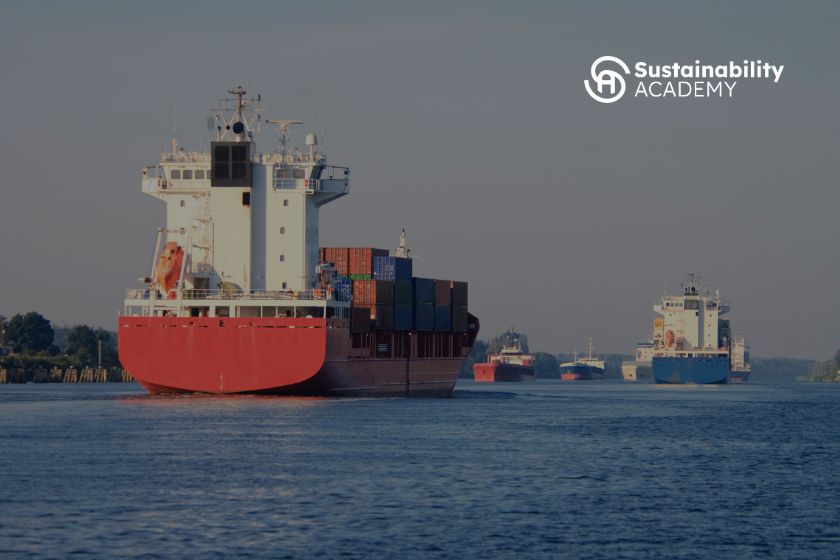Why Maritime Decarbonization Training Needs Matter
The maritime industry is under growing pressure to decarbonize. International shipping accounts for nearly 3% of global greenhouse gas emissions, according to the International Maritime Organization (IMO). In response, the IMO has adopted an enhanced strategy to cut emissions by at least 50% by 2050, with a revised ambition to reach net-zero around mid-century.
While most attention is focused on cleaner fuels and greener vessels, there’s a quieter barrier to progress, training gaps.
From port operators to fleet managers, many professionals lack the specialized skills needed to implement decarbonization strategies. Without targeted workforce training, even the most advanced vessels and digital tools risk underperformance. Addressing maritime decarbonization training needs, it’s about enabling operational transformation.
The Benefits of Closing Training Gaps
Investing in specialized training delivers wide-reaching benefits:
- Operational efficiency – Training in energy-efficient routing and slow steaming can reduce fuel consumption immediately (Port of Los Angeles).
- Safety and compliance – Well-prepared crews adapt faster to new emissions regulations and alternative fuels (Maersk).
- Port resilience – Skilled port staff implement shore power systems and renewable integrations more effectively (European Maritime Safety Agency).
- Career growth – Professionals with decarbonization skills gain a competitive edge in a rapidly evolving sector (Global Maritime Forum).
In short: people are the link between technology and results.
Practical Steps to Address Training Needs
A structured approach helps maritime organizations build long-term decarbonization capacity:
1. Assess Current Skills
Start with a baseline assessment of your team’s knowledge in:
-
Carbon emissions tracking
-
Energy efficiency practices
-
Sustainable procurement and fuel management
According to the Global Maritime Forum, workforce readiness has become a critical bottleneck, with training needs outpacing technology deployment.
2. Design Role-Specific Training
Not all roles need the same training. Tailor programs to function:
-
Crew members – Training in low-carbon fuel handling, safety, and maintenance. Lloyd’s Register notes that methanol, ammonia, and hydrogen bunkering require entirely new safety protocols.
-
Fleet managers – Training on digital navigation tools for route optimization.
-
Port staff – Skills in shore power systems, charging infrastructure, and logistics efficiency.
3. Integrate Training into Daily Operations
One-off workshops are not enough. Embed learning into routines through:
-
On-the-job mentorship
-
Simulation tools
-
Microlearning modules and continuous certification programs
Common Mistakes to Avoid
Avoid these frequent pitfalls:
- Treating training as a compliance checkbox.
- Buying advanced technology without preparing teams to use it. DNV warns that shipowners risk “stranded investments” if crews are not trained for new fuel systems.
- Failing to allocate time and budget for skill development.
These oversights lead to underutilized systems, wasted resources, and slow progress toward emission targets.
Real-World Examples of Training in Action
-
The Port of Los Angeles has implemented training programs on shore power, enabling vessels to plug into renewable electricity instead of running diesel while docked.
-
Maersk is preparing crews for methanol bunkering operations ahead of its carbon-neutral fleet launch.
These examples prove that training accelerates the impact of technology and infrastructure investments.
FAQs
What is maritime decarbonization training in simple terms?
It’s specialized education for maritime professionals on how to reduce emissions, operate new low-carbon technologies, and comply with evolving regulations (IMO).
How long does it take to build skills in this area?
Basic training can be completed in a few weeks. Full certifications may take several months. Ongoing learning is essential as technologies and policies evolve.
Is maritime decarbonization training worth it for career growth?
Yes. Professionals with these skills are in high demand as maritime organizations strive to meet IMO targets and ESG expectations from investors and regulators (UNCTAD).
Take the Next Step
The future of shipping doesn’t rely on fuels and ships alone—it depends on the people who operate and manage them. Targeted training is the missing link in most decarbonization plans.
Ready to lead the green transformation?
Enroll in the Diploma in Sustainable Supply Chain Management today. Gain the tools to assess training gaps, optimize fleet and port operations, and accelerate maritime decarbonization.

